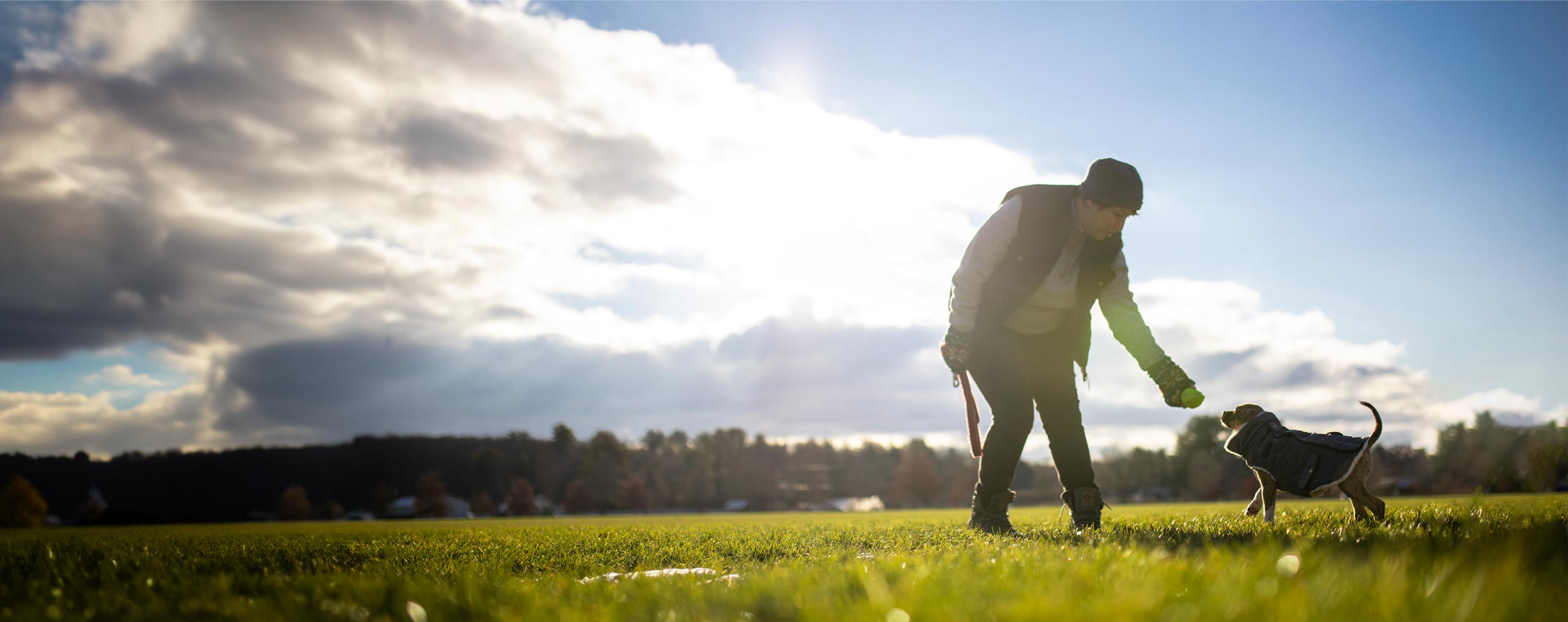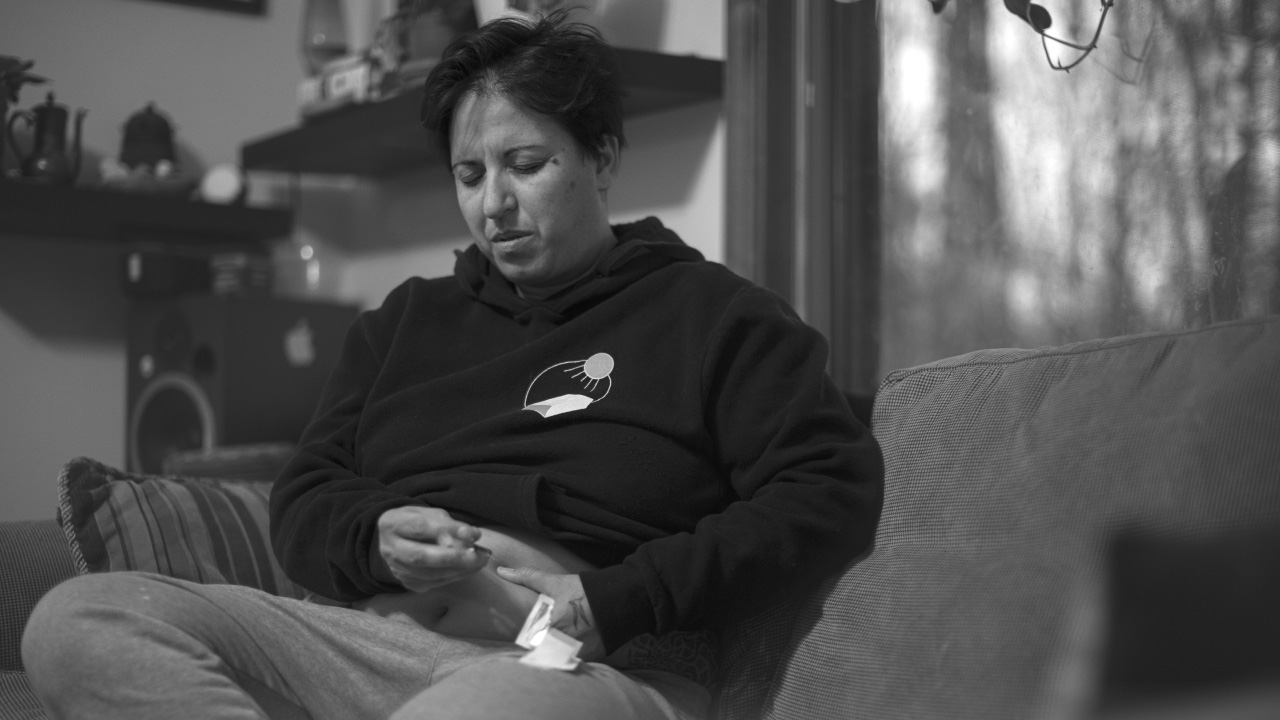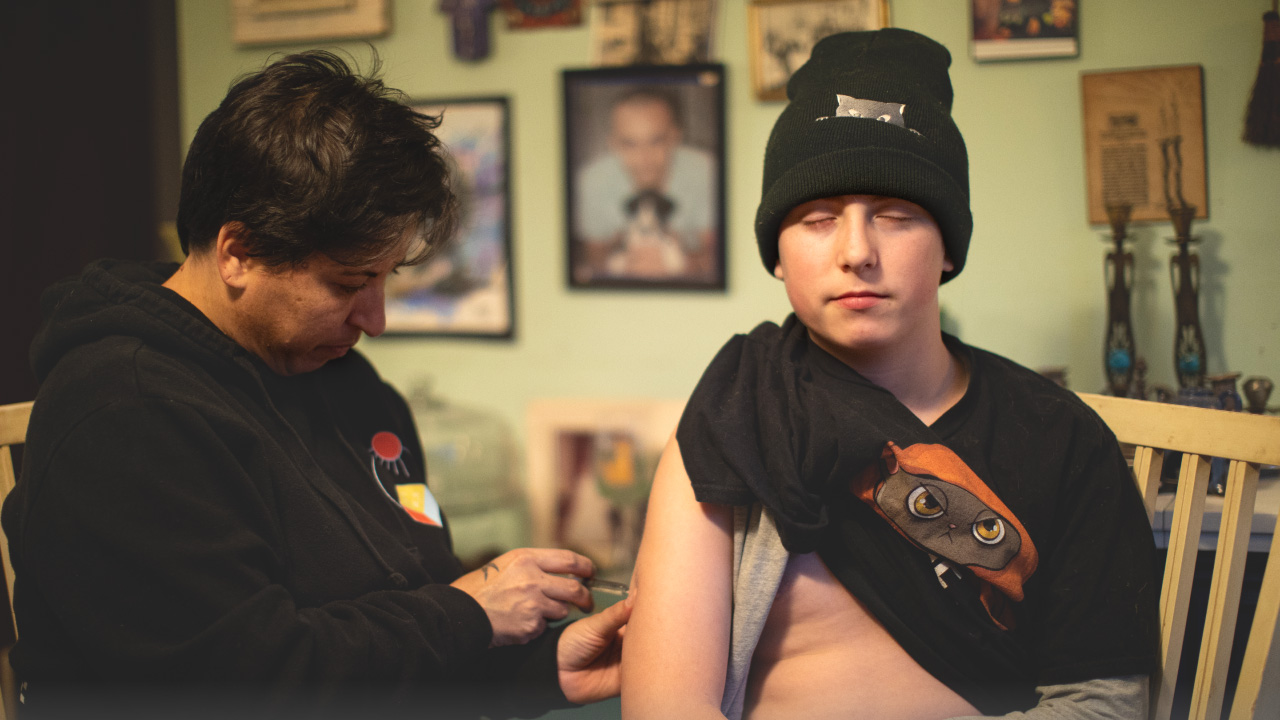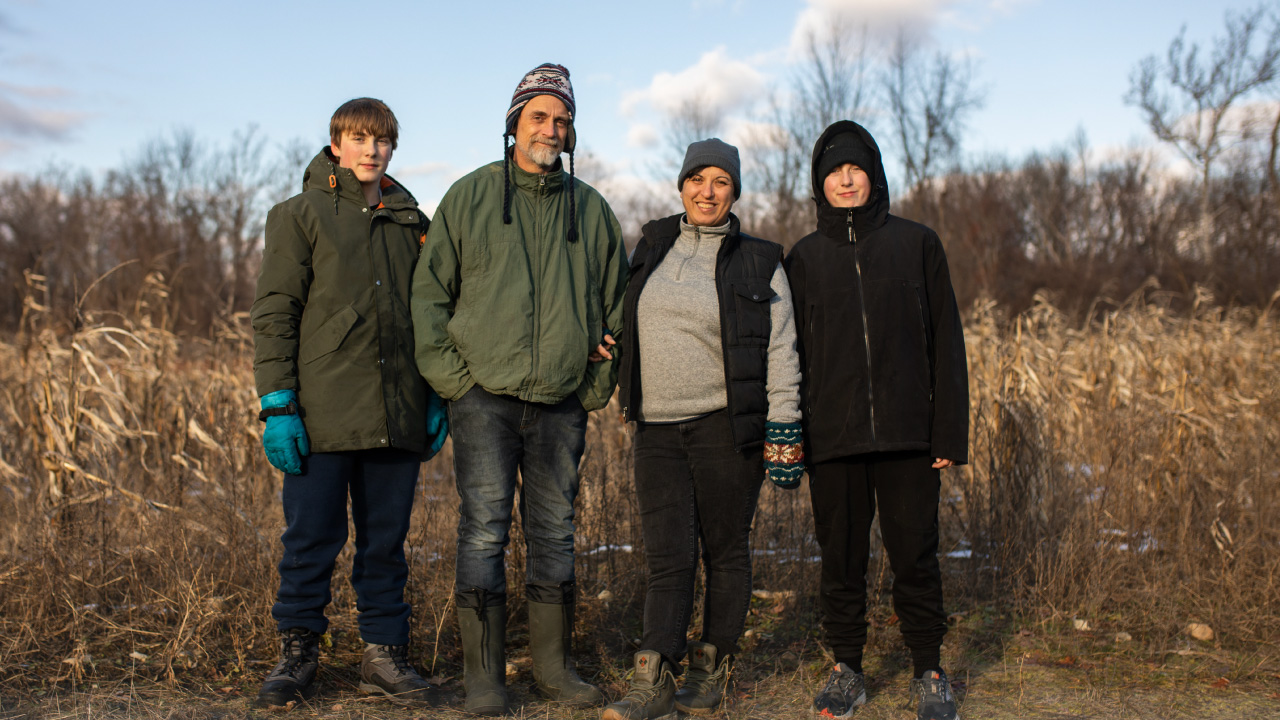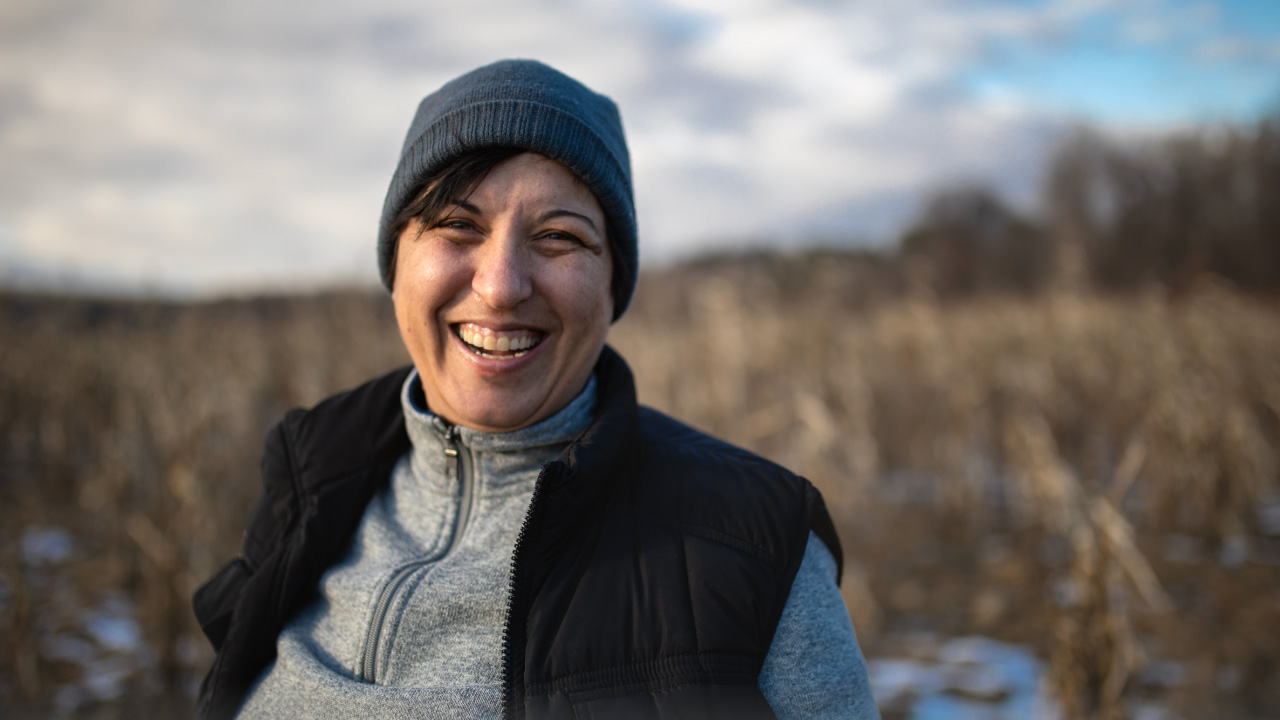Shanna, Oren and Damian | Living with Hereditary Angioedema Type 1
Shanna | they/them/theirs | Leeds, MA
There’s so much uncertainty with rare disease — the best treatment is your own confidence in making the decisions that are right for you. — Shanna
Shanna, Damian and Oren sit cozily on the sofa surrounded by purring cats. The home Shanna and their husband, Tony, have curated is rich with the family’s personal touch: photographs and artwork cover almost every inch of wall space. Candelabra, sculptures, heirlooms and plants grace the shelves and tables that surround them.
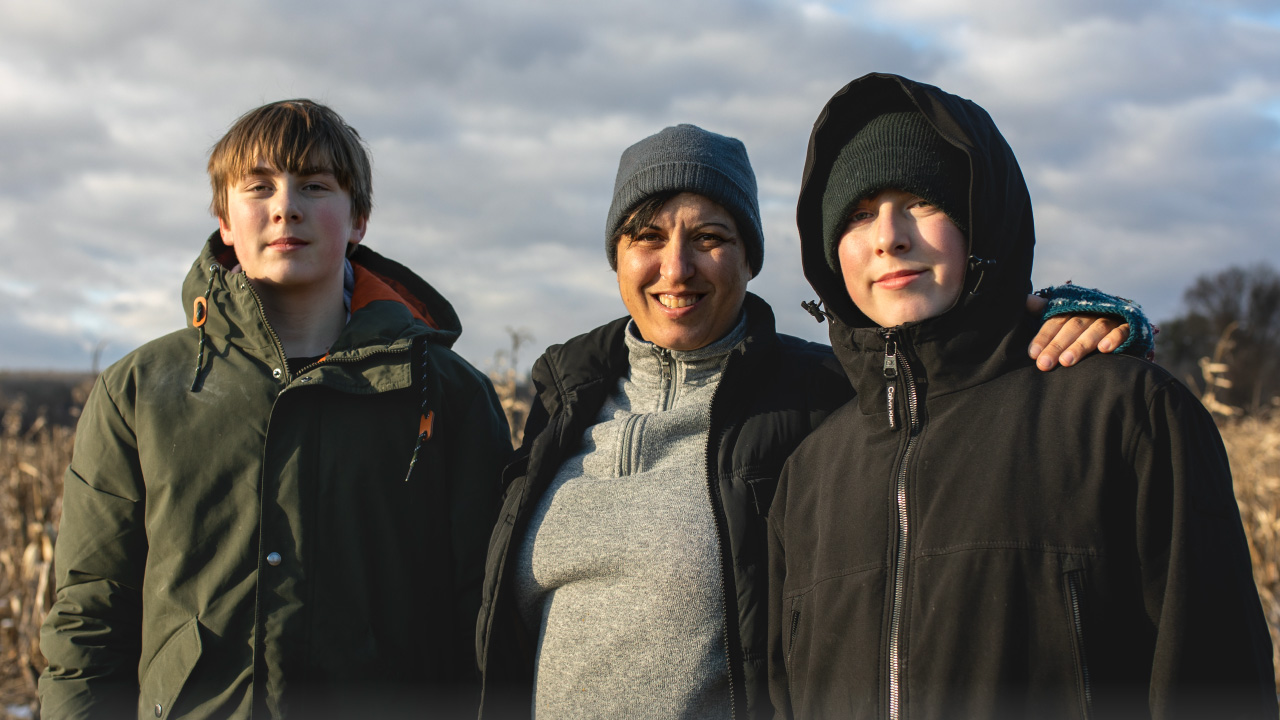
Oren, Shanna and Damian | Living with HAE Type 1
The atmosphere is one of deep familiarity and comfort. “Knowing how to provide comfort has become crucial and a cornerstone of our home life,” says Shanna, who was diagnosed at the age of 16 with hereditary angioedemaAlso known as HAE. Rare and potentially life-threatening genetic disease characterized by overproduction of bradykinin, which leads to recurring, severe and unpredictable swelling in various parts of the body. (HAE) type I, a rare genetic disease Shanna inherited from their father, and has passed onto their teenage twin sons.
People with HAE carry an altered gene that controls the C1-inhibitor protein, producing a reaction that causes different parts of the body to swell. These attacks are often severe and can be fatal should the mouth or throat swell shut. While these episodes can be spontaneous, Shanna and the boys live with a hyper-awareness of what they know can trigger their recurrent swelling.
Stress and anxiety are among some of the more common triggers, but Shanna recalls from their adolescence spent in Jerusalem where at the age of 11, they noticed swelling in their feet after a picnic in the park. “It kept on happening every couple of months,” Shanna recalls. “I was an active child, I did ballet. I was a studious middle schooler, writing a lot, and sometimes my hands would swell.”
As is often the case with HAE, physical exertion or prolonged use of the extremities triggered Shanna’s earliest childhood attacks, when it was second nature to be active and outside. HAE attacks are commonly mistaken for severe allergic reactions. In Shanna’s case, every doctor but one was baffled as to what was causing their symptoms. After more than four years of visiting different allergists in Israel who could not identify the root cause of Shanna’s symptoms, a doctor, who had some knowledge of the rare condition, ordered a blood test, mainly to rule out HAE as a possibility. That same day, Shanna was diagnosed with HAE type I.
“I became my own patient advocate from a very early age, and I think that changed the course of my life,” says Shanna. Their ability to speak up for themself and for others stems from experiences convincing their parents, doctors — and on one memorable occasion, the Israeli military — that their condition and its symptoms are real and debilitating.
This trend has continued for Shanna, Damian and Oren, whose lives are shaped by the disease they carry. “Having the right job with the right kind of insurance and living close to a hospital has always been a part of our life,” reflects Shanna. “Sometimes I think HAE doesn’t impact my life right now [because of medication] — but it does. All our decisions are based on access to health care.”
After the twins were born, Shanna was able to recognize and help diagnose the symptomatic red splotches that began to appear on their skin at six months, indicative of an HAE attack: “It took me less than a minute [to realize that] if none of these pediatricians know what’s causing this rash, it must be HAE.”
Shanna’s diagnosis was unknowingly passed down from Shanna’s father, who suffered two HAE attacks in his lifetime — both at the age of 40, the same age he was diagnosed. Shanna’s brother and sister inherited HAE from him as well, and while not as severely affected by the disease, they both look forward to potential new treatment options.
Oren and Damian have participated with their mother in numerous studies with various therapeutic goals. Although they are young, their thoughts are often preoccupied with the future, expressing if or when they have their own children, they would consider gene editingAlso called genome editing. Gene editing collectively refers to a set of technologies, including CRISPR/Cas9, that can be used to cut and modify DNA. Gene editing uses systems to make the DNA change inside the cell. These cells can be edited in the body (in vivo) or outside the body (ex vivo) from a patient or donor..
Oren and Damian have experienced frequent abdominal attacks, triggered by stress, physical activity, or even slight variations in their diet. They recall different camping trips and beach vacations interrupted or cut short by episodes of acute stomach pain.
Their access to effective medication offers a striking contrast to Shanna’s own adolescence and early adulthood.
“Before I was on this medication, I would wake up with intense anxiety and fear. Any time I would have a sore throat, I thought I was going to die,” Shanna confesses. “There were years of thinking that if I sleep by myself, I’m not going to wake up.”
The family’s anxieties are tempered by gratitude for their current infusions, which allow both Shanna and the twins to experience fewer and less severe swelling episodes. They share hope that continued research into HAE could further improve the quality of life for future generations.
Their tight-knit family paints a vibrant picture of the importance of support systems. “One thing that HAE has brought to this family is we’re very much in tune with each other’s health conditions — Tony is very much a caregiver. The boys speak to doctors very well; they can explain their pain.” Shanna administers the prophylactic medication to the boys monthly, with the infusion sites varying between the arms or stomach. Shanna often self-administers, all from the comfort of home.
The boys play with their new VR set after Shanna gives them the injection. Shanna grimaces while preparing their own: “Always better than an IV. That’s what I keep telling myself,” Shanna murmurs. “The fact that they can just run around afterwards — it’s just amazing.

